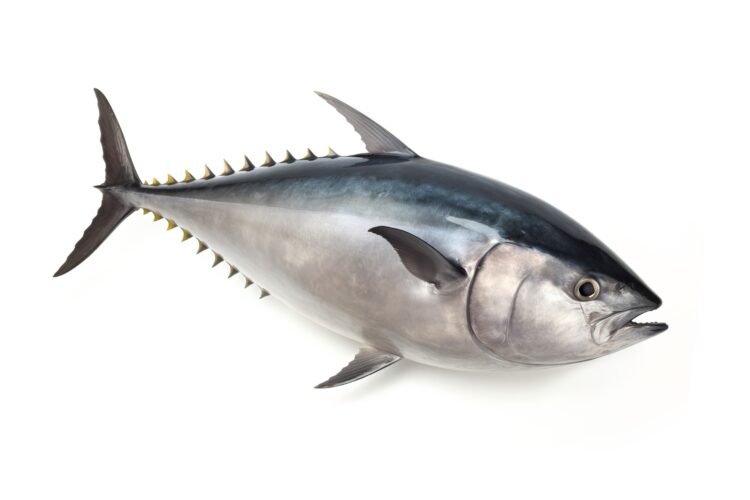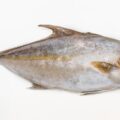Grouper and Bluefin Tuna are two popular fish species that are widely consumed across the world. While both fish are delicious and sought after, there are some notable differences between the two that are worth exploring. In this article, we will delve into the differences between Grouper versus Bluefin Tuna, including their taste, texture, nutritional value, and sustainability.
When it comes to taste and texture, Grouper and Bluefin Tuna are quite different. Grouper is a white, flaky fish with a mild flavor that is often compared to that of halibut or sea bass. It has a firm texture that holds up well to grilling, baking, or frying. Bluefin Tuna, on the other hand, is a rich, meaty fish with a buttery texture and a distinctive flavor that is often described as slightly sweet and nutty. It is best enjoyed raw or lightly seared to preserve its delicate flavor and texture.
In terms of nutritional value, both Grouper and Bluefin Tuna are excellent sources of protein and omega-3 fatty acids, which are important for heart health and brain function. However, Bluefin Tuna is also high in mercury, which can be harmful if consumed in large quantities. Grouper, on the other hand, is generally considered safe to eat in moderation. Additionally, Bluefin Tuna is a highly endangered species, while Grouper is more sustainable and widely available.

Taxonomy and Species Classification
Grouper Taxonomy
Grouper is a common name given to a variety of fish species that belong to the subfamily Epinephelinae of the family Serranidae. This subfamily includes over 160 different species of fish, which are commonly referred to as groupers. Groupers are found in tropical and subtropical waters around the world, and they are known for their large size and firm, white flesh.
The taxonomy of groupers is complex and has undergone significant changes over the years. Currently, the most widely recognized classification system for groupers is based on genetic analysis. According to this system, groupers are divided into three main genera: Epinephelus, Mycteroperca, and Hyporthodus. The most widely known are the Red Grouper and the Black Grouper.
Bluefin Tuna Taxonomy
Bluefin tuna is a species of tuna that belongs to the family Scombridae. There are three different species of bluefin tuna: Atlantic bluefin tuna (Thunnus thynnus), Pacific bluefin tuna (Thunnus orientalis), and Southern bluefin tuna (Thunnus maccoyii). Bluefin tuna are known for their large size and high-quality flesh, which is prized by sushi chefs around the world.
The taxonomy of bluefin tuna is relatively straightforward. All three species of bluefin tuna belong to the genus Thunnus, which is part of the family Scombridae. The Atlantic bluefin tuna and Pacific bluefin tuna are further classified into two different subspecies each, based on their geographic distribution and genetic differences. The Southern bluefin tuna is not currently recognized as having any subspecies.

Physical Characteristics
Grouper Features
Grouper is a type of fish that has a robust and bulky body structure. They have a large head with a broad mouth and thick lips. The dorsal fin of a grouper is long and continuous, while the anal fin is shorter. The scales of a grouper are large and thick, which makes them appear rough and scaly. They come in various colors such as brown, green, yellow, and red.
Grouper has a unique feature called the swim bladder, which helps them to maintain buoyancy in water. The swim bladder is a gas-filled sac that helps the fish to control their depth in the water. Grouper also has a lateral line system, which helps them to detect vibrations and movements in the water.
Bluefin Tuna Features
Bluefin tuna is a streamlined fish with a torpedo-shaped body. They have a pointed head, and their mouth is large and toothless. The dorsal fin of a bluefin tuna is long and continuous, while the anal fin is shorter. The scales of a bluefin tuna are small and smooth, which makes them appear sleek and shiny. They come in various shades of blue and silver.
Bluefin tuna has a unique feature called the thermoregulatory system, which helps them to maintain their body temperature in cold water. This system allows them to conserve heat in their muscles and organs, which enables them to swim in cold water for extended periods. Bluefin tuna also has a lateral line system, which helps them to detect vibrations and movements in the water.
In summary, Grouper and Bluefin Tuna have distinct physical characteristics that set them apart from each other. Grouper has a robust and bulky body structure with large, thick scales, while Bluefin Tuna has a streamlined body with small, smooth scales. Both fish have unique features such as the swim bladder and thermoregulatory system, which help them to survive in their respective environments.
Habitat and Distribution
Grouper Habitat
Groupers are a type of fish that are commonly found in warm, shallow waters around the world. They are known to inhabit rocky reefs, coral reefs, and other similar habitats. Groupers are typically found in the Atlantic Ocean, the Gulf of Mexico, and the Caribbean Sea. They prefer to live in areas with plenty of hiding places, such as caves and crevices, where they can ambush their prey.
Bluefin Tuna Distribution
Bluefin Tuna are a highly migratory species that can be found in the Atlantic, Pacific, and Indian Oceans. They are known to travel long distances and can be found in both warm and cold waters. Bluefin Tuna are typically found in the open ocean, far from shore, and are known to inhabit deep waters. They are commonly found in the Mediterranean Sea, the Gulf of Mexico, and the western Atlantic Ocean.
Bluefin Tuna are highly sought after by commercial and recreational fishermen, and as a result, their populations have been severely depleted in some areas. In recent years, efforts have been made to regulate the fishing of Bluefin Tuna in order to protect their populations.
Dietary Habits
What Groupers Eat
Groupers are carnivorous fish that feed on a variety of prey, including fish, crustaceans, and cephalopods. They are opportunistic predators and will eat whatever prey is available to them. Some common prey items for groupers include snappers, grunts, and small sharks. Groupers are also known to feed on squid and octopus.
Groupers are ambush predators and will often hide in caves or crevices and wait for prey to swim by. They have a large mouth and can swallow prey whole. Groupers have been known to eat prey that is up to half their size.
What Bluefin Tunas Eat
Bluefin tunas are also carnivorous fish that feed on a variety of prey. They are top-level predators and feed on smaller fish, squid, and crustaceans. Bluefin tunas are known to feed on a variety of fish, including herring, mackerel, and anchovies.
Bluefin tunas are fast swimmers and have a streamlined body that allows them to catch prey easily. They are known to swim at high speeds and can catch prey that is faster than them. Bluefin tunas have a large mouth and sharp teeth that allow them to catch and swallow prey whole.
Overall, both groupers and bluefin tunas are carnivorous fish that feed on a variety of prey. While groupers are ambush predators that hide and wait for prey, bluefin tunas are fast swimmers that chase and catch their prey.
Commercial and Recreational Fishing
Fishing for Grouper
Grouper is a popular fish for both commercial and recreational fishing. Commercial fishers typically use bottom longlines, traps, and gillnets to catch grouper. Recreational fishers, on the other hand, use a variety of methods including hook and line, spearfishing, and even bowfishing.
Grouper is a slow-growing fish and can live for over 30 years, making it vulnerable to overfishing. To ensure the sustainability of grouper populations, many countries have implemented regulations on the size and number of grouper that can be caught.
Fishing for Bluefin Tuna
Bluefin tuna is highly valued in the commercial fishing industry, with some individual fish selling for millions of dollars. Commercial fishers typically use purse seines, longlines, and harpoons to catch bluefin tuna.
Recreational fishers also target bluefin tuna, but it is a difficult fish to catch due to its size and strength. Anglers often use heavy tackle and live bait to increase their chances of catching a bluefin tuna.
Bluefin tuna is also a species that is vulnerable to overfishing. To help protect bluefin tuna populations, many countries have implemented strict regulations on the size and number of bluefin tuna that can be caught.
In summary, both grouper and bluefin tuna are popular fish for both commercial and recreational fishing. However, due to their vulnerability to overfishing, it is important to follow regulations and guidelines to ensure the sustainability of these fish populations.











